This post may contain affiliate links. Please read our disclosure policy.
How to make cinnamon tea – a soothing, warming drink packed with antioxidants and beneficial plant compounds! Perfect for cold & flu season, with caffeinated, non-caffeinated, and several flavor variations below!
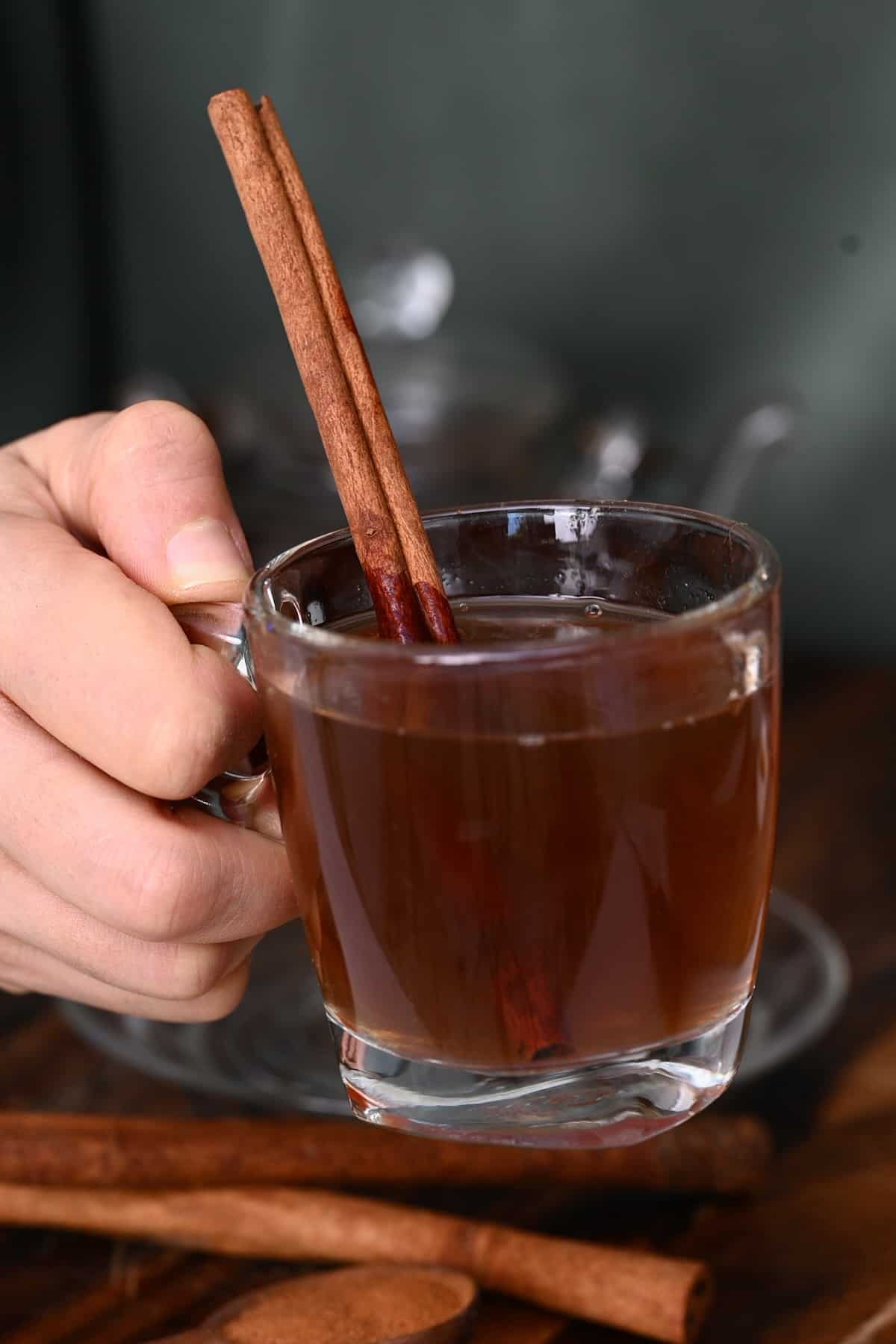
While I dream of warmer days and summery treats, classic British winter is in full effect here. This means I’m starting and ending each day with warming, soothing, drinks like fresh mint tea, ginger tea, and this fragrant cinnamon tea (aka cinnamon stick tea).
Cinnamon tea is typically made by infusing cinnamon (either in cinnamon stick, powder, or even tea bag form) in hot water and often combined with a tea such as black tea, green tea, or oolong tea. For the version below, I’ve added black tea leaves, though that’s 100% optional. I’ve included a ton of ways to adapt the recipe with additional flavor, too.
No matter how you enjoy it, this cinnamon stick tea is woody, warm, and aromatic with a naturally sweet flavor (invoking images of cinnamon apple pie, stuffed baked apples, and other fall favorites). It’s perfect for relaxing and unwinding. Best of all, it leaves your kitchen smelling fantastic!
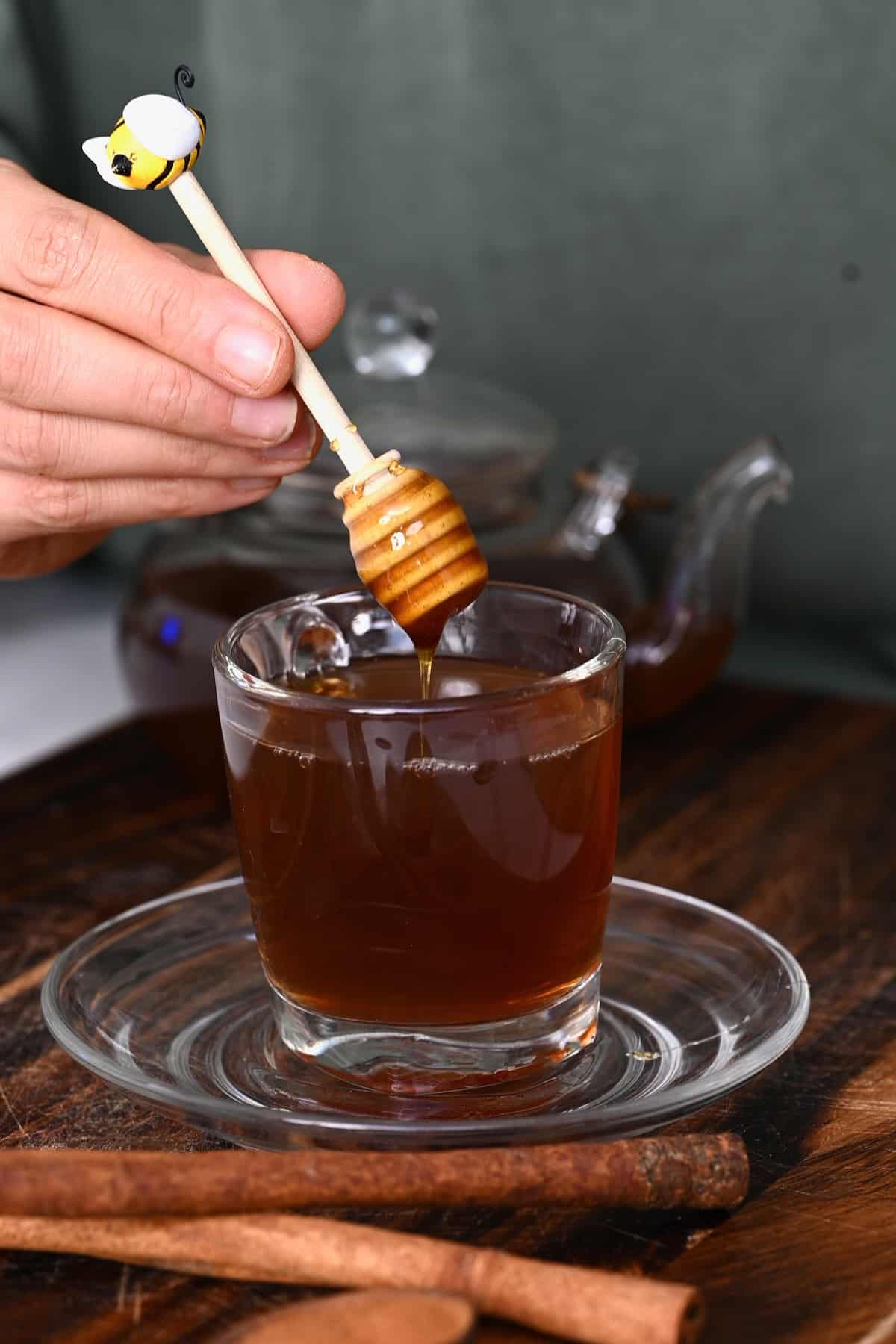
Looking for more soothing warm tea recipes? Check out this pineapple skin tea (anti-inflammatory tea), masala chai (which also contains cinnamon, among other warming spices), or this post on making green tea (with no bitterness)!
Want to save this recipe?
The Ingredients
You only need 3 base ingredients to prepare this light yet soothing cinnamon bark tea.
- Cinnamon: this recipe uses cinnamon sticks. It’s best to use cinnamon sticks rather than powder. For cinnamon tea, use Ceylon cinnamon sticks. It’s milder, has a lighter color, and is lower in coumarin than cassia cinnamon. Check the FAQs below for the method with ground cinnamon.
- Black Tea: you can use loose tea leaves or a teabag of your choice of black tea (use decaf if preferred). You could use green tea instead of black for a lighter flavor. Rooibos tea will also work well.
- Water: to make up the base of the Ceylon cinnamon tea.
- Honey: (optional) It’s up to you what type of sweetener you use for this cinnamon tea recipe (if any at all). I particularly like honey and cinnamon tea, though dandelion honey will work as a vegan option. Alternatively, use erythritol/swerve or a similar sweetener for a sugar-free version.
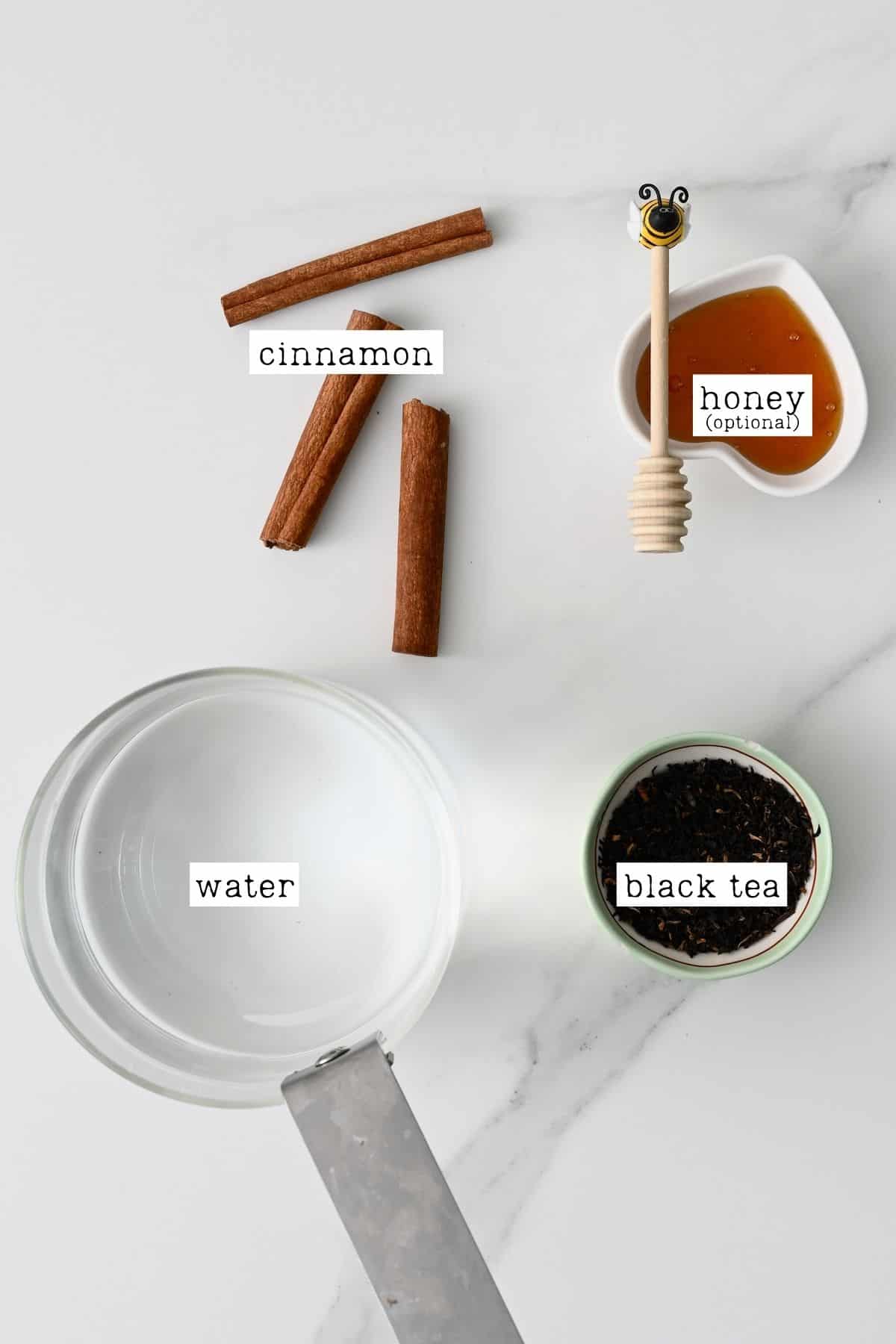
Flavor Variations
Once you have the base cinnamon tea recipe sorted, you’ll be happy to know that there are tons of ways to adapt this warming tea to your liking, including:
- Lemon: when sweetening the cinnamon honey tea, I love to add a squeeze of lemon juice.
- Cinnamon orange tea: instead of a splash of lemon juice, use orange juice. You can further infuse the flavor into the cinnamon stick tea by adding some orange zest to the mixture as it steeps.
- Apple cinnamon tea: add a few apple chips to the tea or a few spoonfuls of freshly squeezed apple juice. This tastes wonderful and naturally sweetens the drink.
- Ginger cinnamon tea: ginger will add a spicy “zing” to the Ceylon cinnamon tea. I recommend using a 1/2-3/4 inch piece of fresh ginger root, finely sliced, or ginger powder, per cup.
- Turmeric: add a few slices of fresh turmeric or ½ tsp turmeric powder (per cup) to the cinnamon tea recipe. Add a pinch of freshly cracked black pepper too.
- Bay leaves: will add flavor and is said to increase the weight loss benefits.
- Cloves: add 1 clove per cup for a subtle warming flavor and blood sugar benefits.
- Nutmeg: just a pinch for added flavor.
- Cayenne pepper: just a tiny pinch for a hint of heat.
- Cinnamon milk tea: the same way you would enjoy regular milk tea, simply top up your cup with a splash of your favorite milk (dairy or dairy free milk) and enjoy this cinnamon tea with milk.
How to Make Cinnamon Tea?
- Add the cinnamon sticks and water to a saucepan and bring to a boil over medium-high heat on the stove.
- Once boiling, reduce the heat to a gentle simmer and allow the cinnamon to steep for 10 minutes.
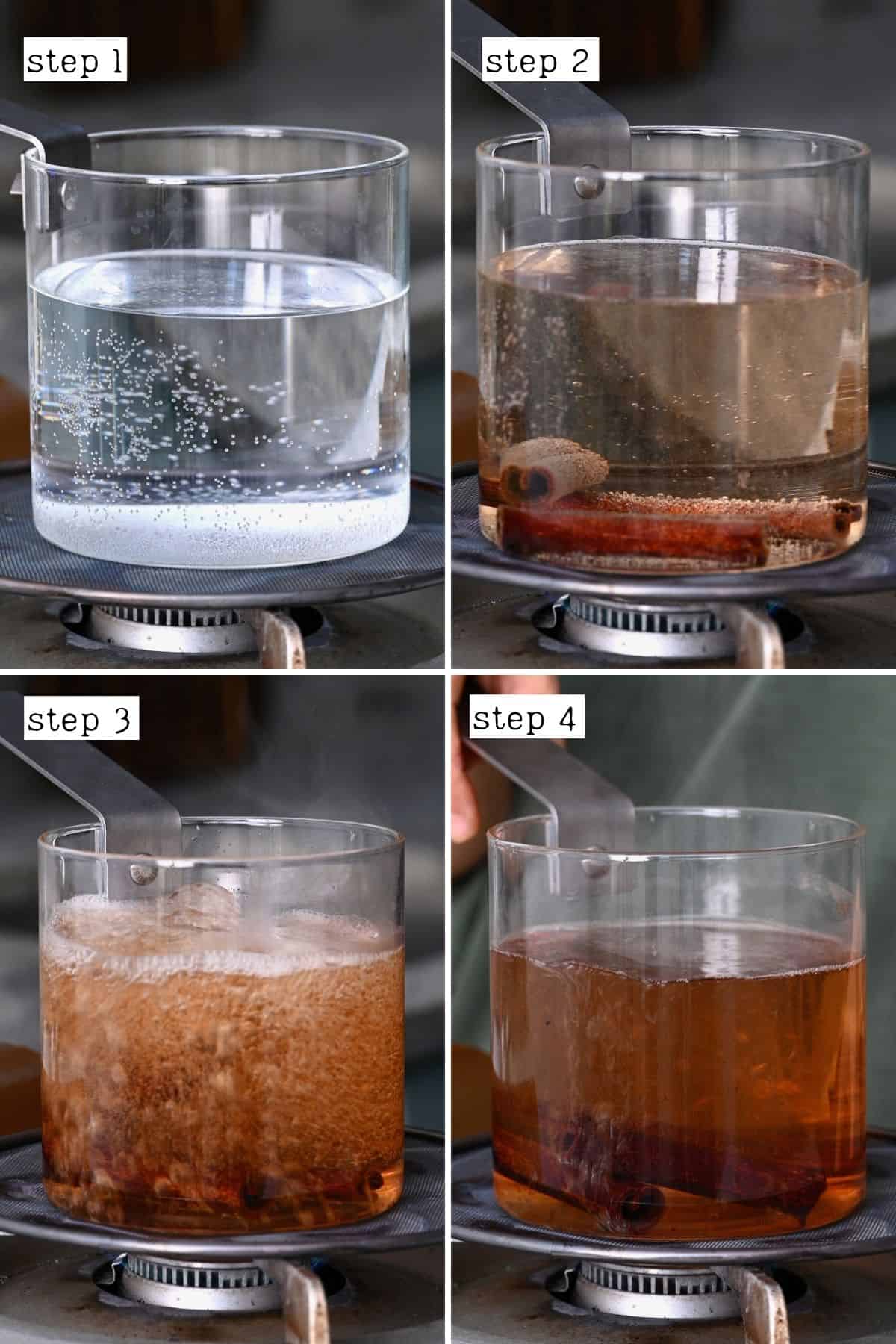
- Then, remove the pot from the heat and add the black tea leaves (either in a strainer or directly in the pot to be strained later). Allow it to steep for a further 1-2 minutes, based on how strong you want the flavor.
You can also optionally remove the cinnamon sticks at this point or allow them to steep for longer.
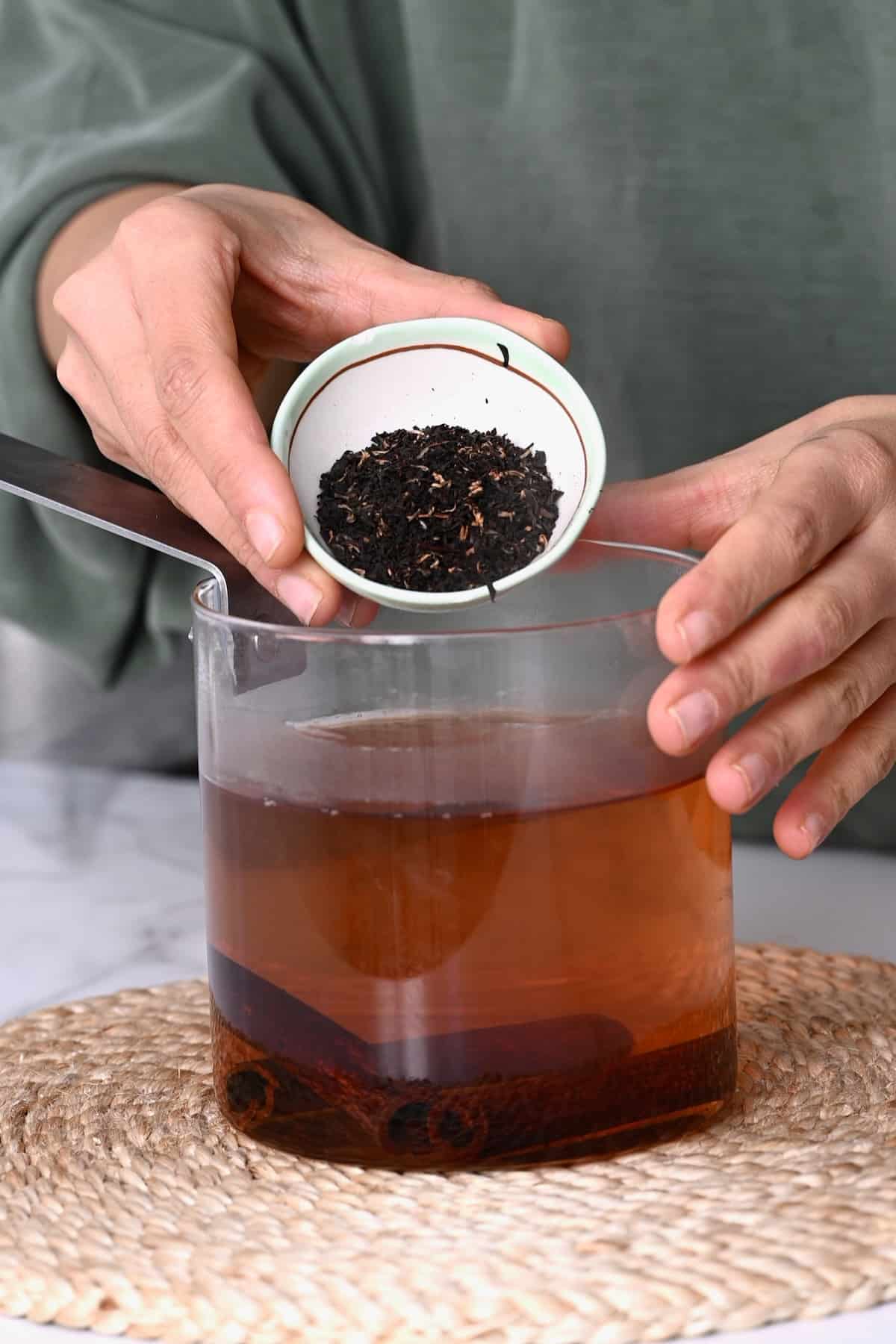
- Finally, transfer the cinnamon tea either to a teapot or directly to your cup/mug of choice. Give it a quick try and sweeten it to your liking, then enjoy!
If you leave the cinnamon sticks in the teapot, the flavor will infuse more over time, becoming more robust with each cupful. If you find it too intense, you can dilute it with a small amount of additional hot water.
To make cinnamon tea using a tea kettle, boil the water first. Then pour it into your teapot and add the cinnamon sticks, allowing them to steep for 10 minutes before serving.
For Cinnamon Iced Tea
After steeping the tea, add any sweetener while it’s still warm, then transfer it to the fridge to chill. Then, serve the cinnamon iced tea over ice with an optional squeeze of lemon juice and enjoy!
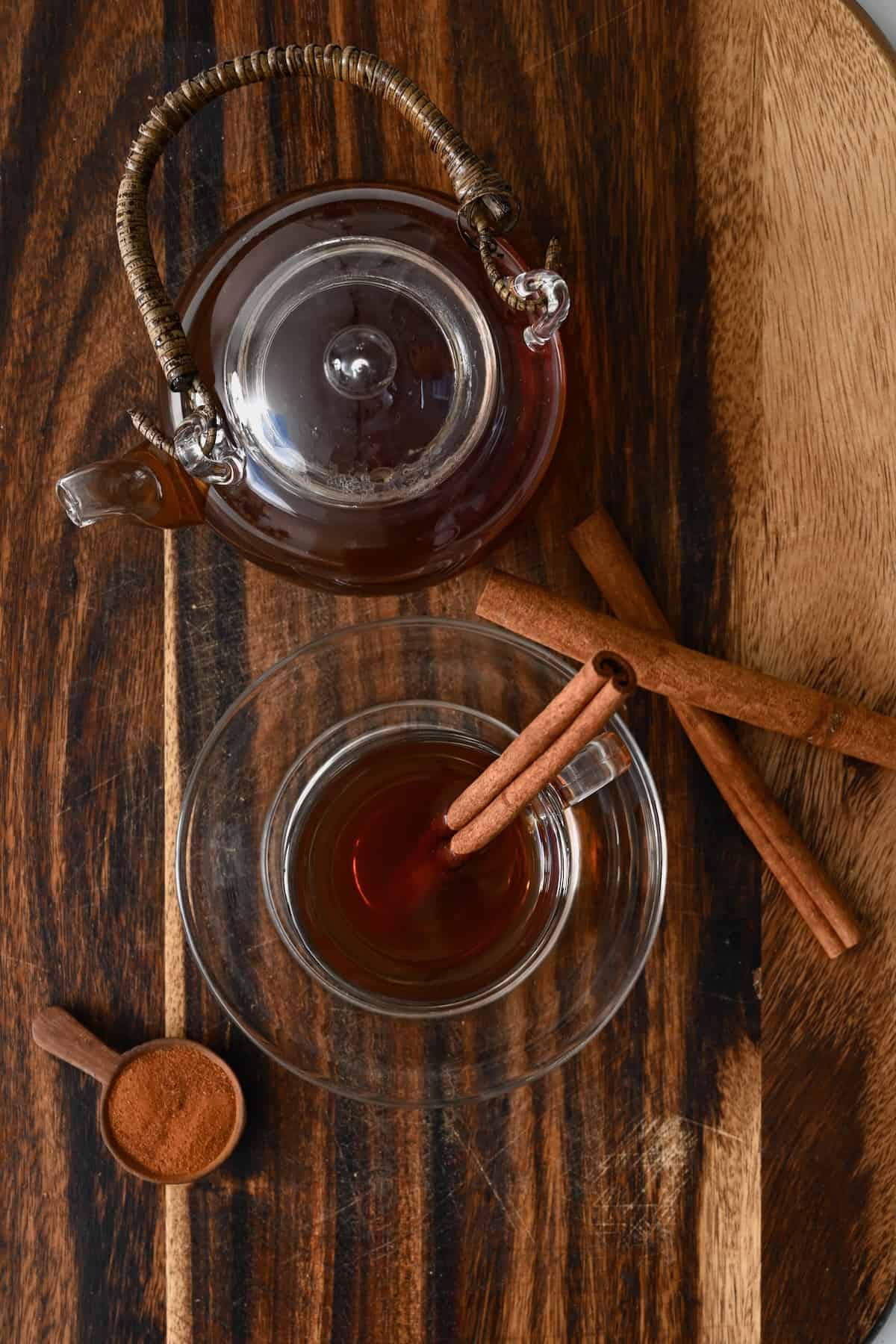
FAQs
Use ½-1 teaspoon of ground cinnamon powder per one cup of water (Ceylon cinnamon is best – adjust the amount to taste). If you have an infuser or empty tea bags, it’s best to place the powder in them. Leave it to steep in boiling water for 3-5 minutes. Enjoy it alone or with black tea.
I recommend only consuming 1-2 cups per day. If you want to take advantage of the blood sugar-lowering effects, consume it with meals. Otherwise, I’ll often have a glass when I wake up or before sleeping.
It is important to note that consuming large amounts of cinnamon may lead to overconsumption of “coumarin.” This compound negatively affects the liver and increases the risk of bleeding. This is more so with Cassia cinnamon (which contains over 60x the amount of coumarin found in Ceylon cinnamon). Just another reason to use Ceylon cinnamon sticks for this cinnamon tea recipe and aim for less than one teaspoon of cinnamon per day.
Please do! You can re-use the same cinnamon sticks several times. I haven’t used one over 5 times, but 3-5 times should be fine if the flavor is still there. Make sure to dry it thoroughly between each use, though, to avoid mold.
Honey, especially raw honey, is most beneficial when used below certain temperatures (as heat kills beneficial nutrients). For that reason, it’s best to add it to warm but not hot cinnamon tea. You can also make the cinnamon and honey tea into iced cinnamon tea.
Plain cinnamon tea with just cinnamon, water, and an optional sweetener is caffeine-free. However, this recipe contains black tea, which contains caffeine. Use decaffeinated tea if preferred.
Yes! It’s possible to make cinnamon tea with just the cinnamon and water (and sweetener if preferred).
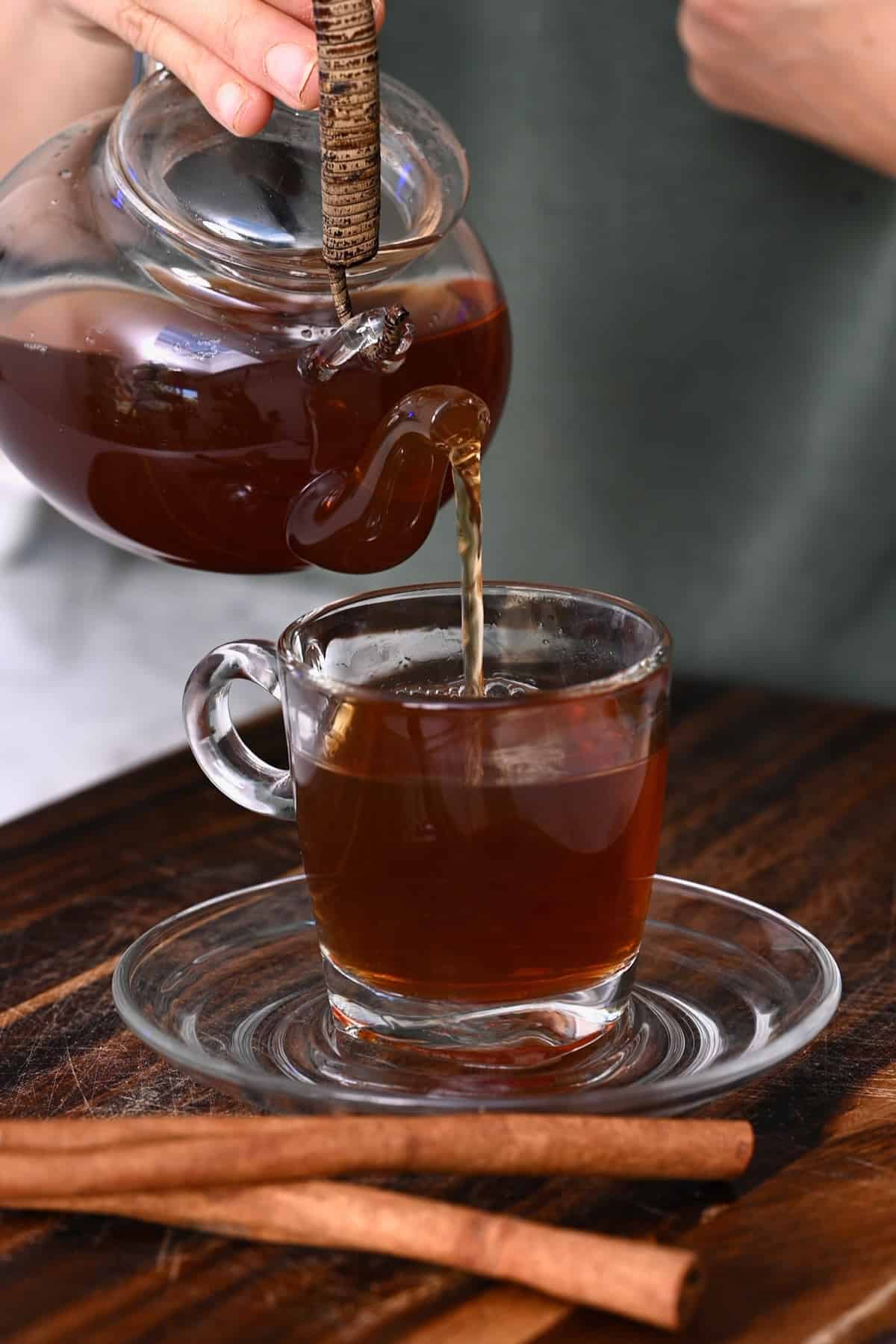
Recipe Tips and Notes
- To keep a teapot warm: fill the teapot with boiling water and allow that to sit for several minutes. Then discard that and add the cinnamon tea. This will keep it warmer for longer. If you have one, a tea cozy works wonders, too.
- To save leftovers: steeped cinnamon tea can be stored in an airtight container in the fridge for 3-4 days and enjoyed iced or reheated.
- Adjust the ratio: if you want a stronger Ceylon cinnamon stick tea, either allow it to steep for longer or add more to the water in the first place. You could also break the stick up into pieces. However, that makes it harder to re-use later on.
- The color will vary: depending on the steep time and if you’ve added lemon (which naturally bleaches the tea).
- The steeping time: the longer you steep the cinnamon (and the black tea leaves), the stronger the flavor. Strain it once it reaches your desired taste.
More Warming Drinks
- Masala Chai Recipe
- Healing mushroom coffee (adaptogen coffee)
- Homemade Hot Apple Cider
- How to make a matcha green tea latte
- Simple hot cocoa recipe
- Fresh Mint Tea (Honey Citrus Mint Tea + Flavor Variations)
- How To Make Hibiscus Tea
- How To Make Turmeric Tea
- British Tea (English Tea | Milk Tea)
- How To Make Chamomile Tea
If you try this Ceylon cinnamon tea recipe, I’d love to hear your thoughts and questions below. Also, I’d appreciate a recipe card rating below, and tag me in your recipe recreations on Instagram @Alphafoodie!
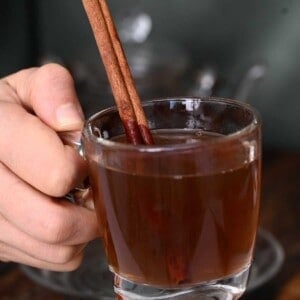
Cinnamon Tea (Hot and Iced | Flavor Variations)
Ingredients
- 2 medium cinnamon sticks or 3 tsp cinnamon powder; use Ceylon cinnamon when possible
- 6 cups water
- 1/2-1 Tbsp loose black tea leaves about 0.18 oz/5 g
- 1 tsp honey or the sweetener of your choice added to taste (optional)
Check the blog post for flavor variations!
Instructions
- Add the cinnamon sticks and water to a saucepan and bring to a boil over medium-high heat on the stove.
- Once boiling, reduce the heat to a gentle simmer and allow the cinnamon to steep for 10 minutes.
- Remove the pot from the heat and add the black tea leaves (either in a strainer or directly in the pot to be strained later). Allow the tea to steep for 1-2 minutes, based on how strong you wish the flavor to be.
- Transfer the tea either to a teapot or directly to your cup/mug of choice. Give it a quick try and sweeten it to your liking, then enjoy!If you leave the cinnamon sticks in the teapot, the flavor will infuse more over time, becoming more robust with each cupful. If you find it too intense, you can dilute it with a small amount of additional hot water.
If Using a Tea Kettle
- To make cinnamon tea using a tea kettle: boil the water first. Then pour it into your teapot and add the cinnamon sticks, allowing them to steep for 10 minutes before serving.
For Cinnamon Iced Tea
- After steeping the tea, add any sweetener while it's still warm, then transfer it to the fridge to chill. Then, serve the cinnamon iced tea over ice with an optional squeeze of lemon juice and enjoy!
Video
Notes
- To keep a teapot warm: fill the teapot with boiling water and allow that to sit for several minutes. Then discard that and add the cinnamon tea. This will keep it warmer for longer. If you have one, a tea cozy works wonders, too.
- To save leftovers: steeped cinnamon tea can be stored in an airtight container in the fridge for 3-4 days and enjoyed iced or reheated.
- Adjust the ratio: if you want a stronger Ceylon cinnamon stick tea, either allow it to steep for longer or add more to the water in the first place. You could also break the stick up into pieces. However, that makes it harder to re-use later on.
- The color will vary: depending on the steep time and if you’ve added lemon (which naturally bleaches the tea).
- The steeping time: the longer you steep the cinnamon (and the black tea leaves), the stronger the flavor. Strain it once it reaches your desired taste.
Nutrition
Nutrition information is automatically calculated, so should only be used as an approximation.

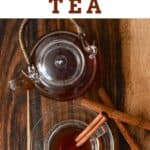
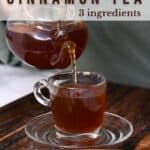
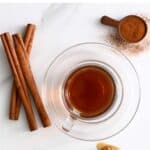
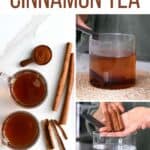

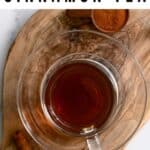









Why didn’t you tell how to make it with powdered cinnamon ?? I have lots of it.
Hi Peggy,
You can use 1/2-1 teaspoon of powdered cinnamon per one cup of water. If you have an infuser or empty tea bags, it’s best to place the powder in them. Leave it to steep in boiling water for 3-5 minutes.